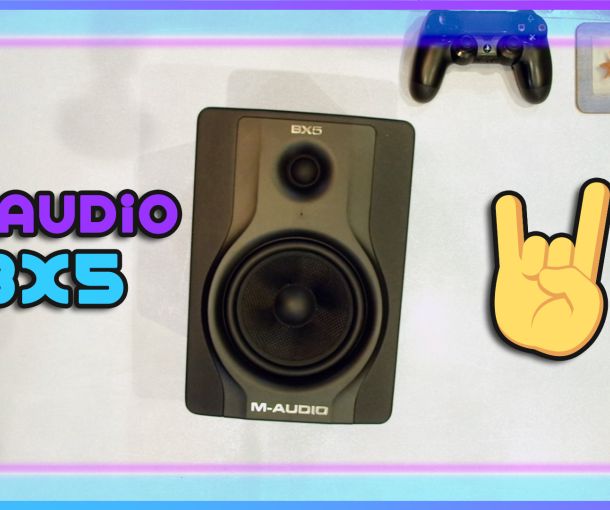M-Audio BX5 Studio Monitor Review
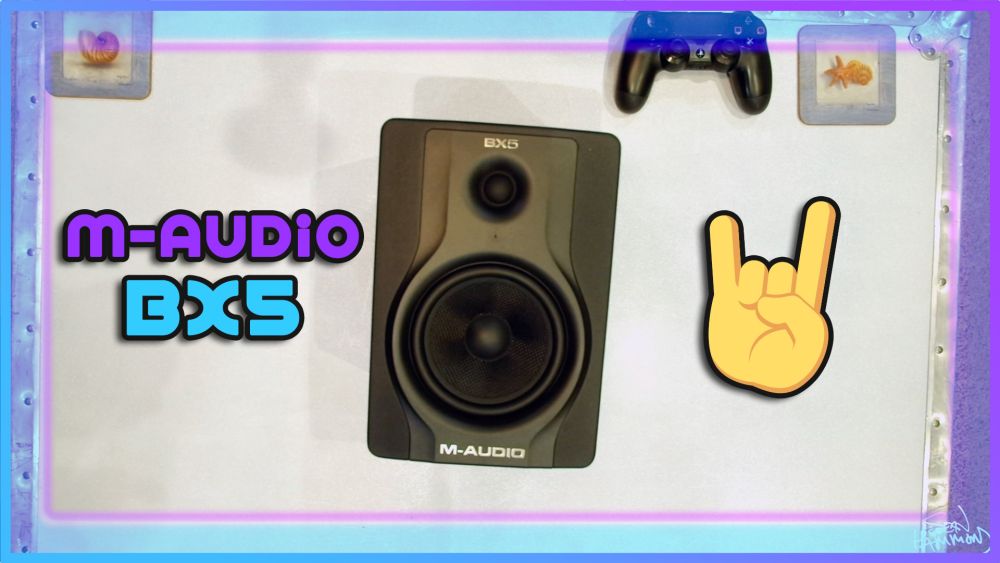
Great For Multi-Media Creation
A thorough review and understanding of M-Audio BX5 studio monitors. A solid choice for most of us, these 5 inch speakers offer clarity and detail that will help you create better mixes.
The three most important things to remember when buying studio monitors: acoustically treat your listening environment, make sure to be honest with yourself about what you actually need, and set your new monitors up properly by calibrating them.
Links to other videos:
- How To Properly Setup and Calibrate Studio Monitors —
- DIY Studio Monitor / Speaker Cradles —
This video is not sponsored. I purchased this piece of equipment with my own money and have no affiliation with the manufacturer. However, please use the Amazon affiliate links below when ordering your gear. You pay the normal low price and I receive a small commission. Here’s everything you’ll need:
- M-Audio BX5 Carbon Black
- M-Audio BX5 D3 (updated version)
- Dayton Audio EMM-6 Electret Measurement Microphone
- Electro-Voice RE27N/D Microphone
- Mackie Big Knob Studio Plus Audio Interface
- Amazon Idea List - All Of My Audio Equipment
Transcript
Howdy—I am SW Hammond and this video is all about studio monitors, the M-Audio BX5 Carbon Black. The good, the bad, some of the things you may not think about, and toward the end of the video I’ll do a sound test of the BX5’s. Remember, you have to calibrate all studio monitors when you first set them up, you can’t just plug and play them out of the box. For a quick run down of how to properly setup any studio monitor, not just the M-Audio BX5’s, checkout my other here, or here—you know, wherever links are typically found.
Here’s my setup. It’s an office where I write my novels and doubles as a recording studio where I record audiobooks and podcasts. It’s also the spot where I make these YouTube videos and do a variety of media related projects. Very rarely am I doing actual album mixing anymore, so before the audio purists freak out about my monitor placement, having these monitors elevated the way they are isn’t a big deal. But more on that later in the video.

So let’s talk about the specs of the M-Audio BX5 Carbon’s:
- 5 inch Kevlar woofers, they’re not “carbon fiber” as the name would suggest
- 1 inch silk dome tweeters
On the back:
- XLR, and 1/4 inch TRS or TS (balanced or unbalanced) inputs
- Ported
- Volume control knob and three way room adjustment switch
- Power switch
- Standard AC power cord input
- And 110 or 220 selector switch

These speakers are:
- 70 watts bi amp’ed, that means we have:
- 40 watts going to woofer
- 30 watts going to tweeter
- Shielded, so safe to use around other electronics and computer monitors
- 3 position acoustic space control, this helps with awkward and less than ideal speaker placement
- Flat
- 2 dB
- 4 dB
And here’s what comes in the box—pretty basic. A user guide and safety instructions.
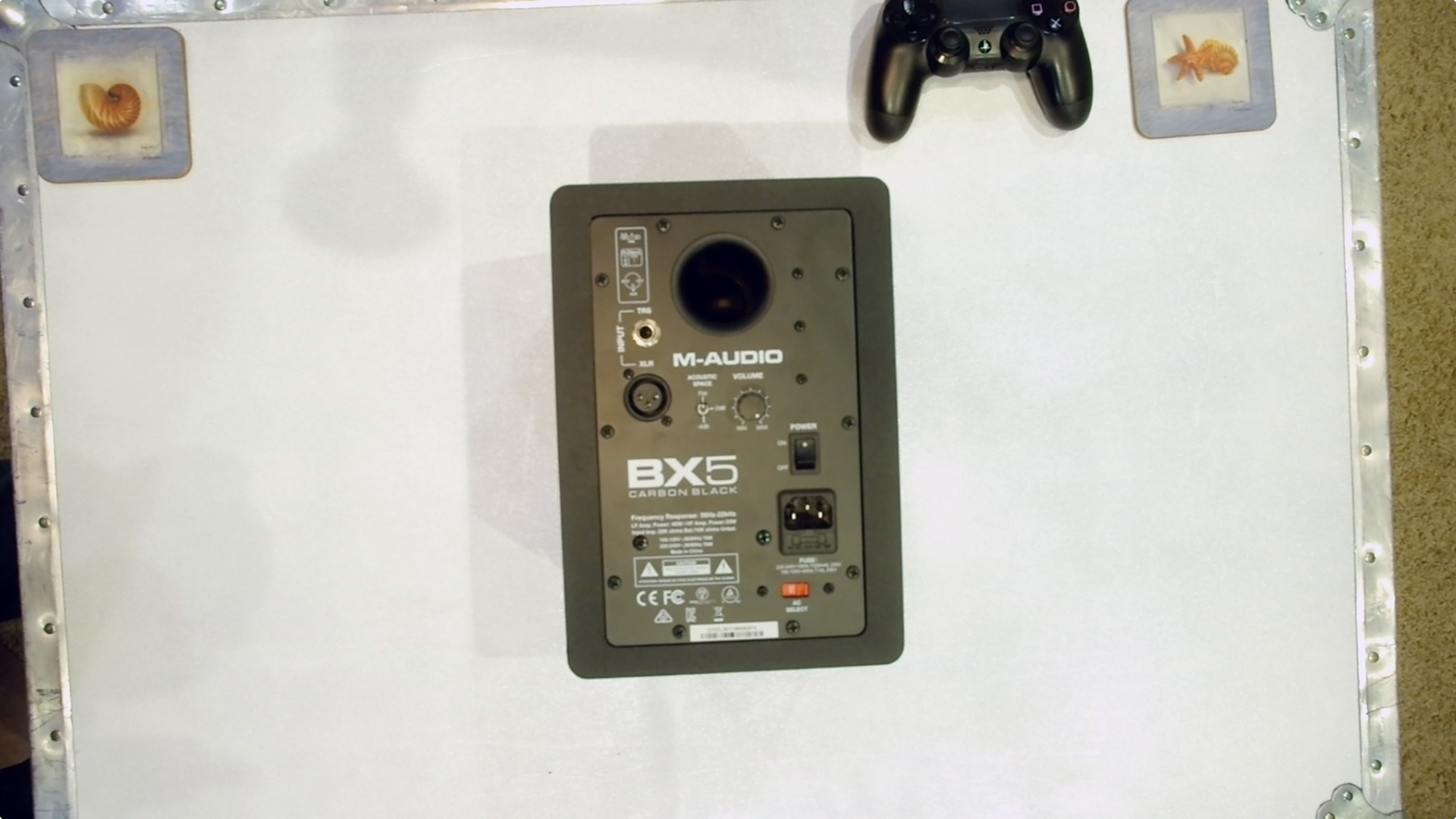
Okay, so how do they sound? I bought my pair during Black Friday of 2018 and it is now the last days of July in 2019, so I’ve had about 8 months of solid use out of them.
Understand that I am not a master audio guru—I have met these people, I am not one of them and becoming an audio ninja is a lifetime pursuit. However, I feel I do know enough and have enough experience to be dangerous and offer you some insight.
I was an assistant audio engineer on roughly 15 “real” albums—by “real”, I mean professional production in legitimate studios. I’m also lucky enough to have spent a little bit of time in a couple of the best studios in the world listening to mixes and demos back when I worked for Sony. The majority of my sound experience comes from live sound, which is a whole different animal, and not particularly relevant to this video. But I tell you this so that you know that I’ve had the opportunity to listen to variety of monitors in professional and technical settings, have a bit of experience using audio equipment, and have a little bit of an idea of how sound works.
So what does that mean for the BX5’s? First off, these were not the speakers that I wanted—however, in hindsight, they certainly fulfill all of my needs. I, like most of us, can get caught up in conflating want verse need. I wasn’t in the market for these BX5 monitors at all—I wanted a minimum of a 6 inch driver, really I wanted an 8 inch driver. I absolutely didn’t want something that was rear ported, and I would have liked more power—100 watts or more. So with the Bx5’s not meeting these three big requirements, why did I buy them?
Well, B&H was having one of those flash sales during Black Friday and they were $49 dollars each—$100 bucks for the pair! It was an absolutely absurd deal, you know if you’re currently shopping that these things typically run at $150 each, or $300 for the pair.
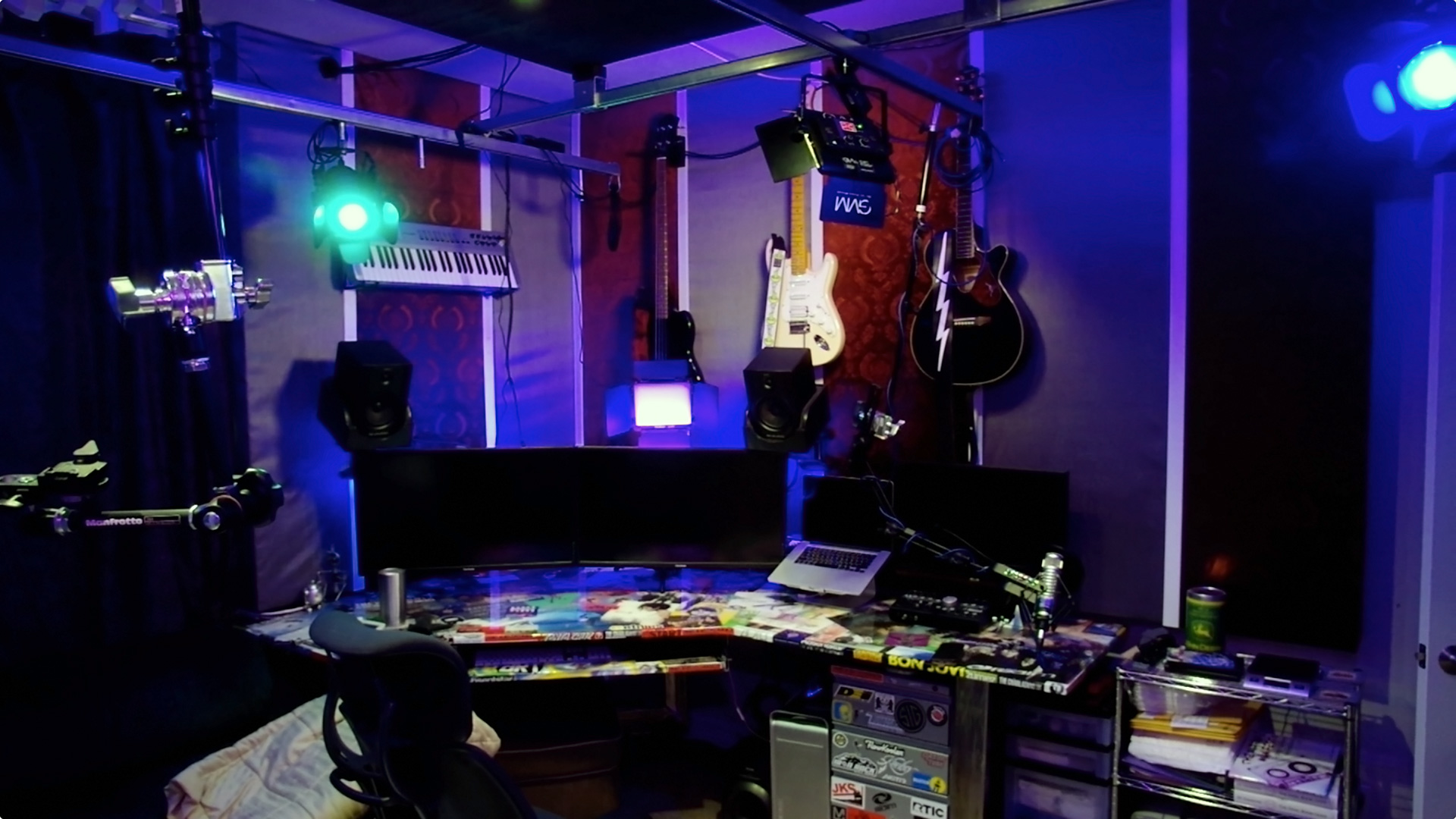
So, I was set to buy a pair of monitors over Black Friday and I was shopping for the specs I just mentioned, which put me $600—$800 dollar price range. I just happened to be on the B&H website at the right time and saw the M-Audio BX5’s for that stupid price. Again, they weren’t even on my radar—but the worst case for $100 bucks, if they didn’t work out in the studio I figured they’d be a great pair to have in the garage or wherever—sell them on craigslist.
So, let’s just get this out of the way. If you’re a professional sound engineer working in a traditional recording studio, you probably already know that these aren’t the monitors for you as your primary setup. If you’re looking for a secondary pair, keep watching. For the rest of us, keep in mind that those engineers are a really smart market and you need to be honest with yourself about the type of creator that you truly are—not who you aspire to be. More importantly, you need to be honest about what your listening environment actually is. If you’re not working a properly sound treated studio, stop spending money on premier audio equipment trying to emulate those people.
Once you get into high studio equipment, you quickly start to experience diminished returns—for example, you can find moderately priced quality equipment that puts you at say, the 97 percentile. In order to reach that 98 or 99%, the price of the gear increases exponentially and those enhancements will only be noticed in the best listening environments to the most well trained ear.
Yes, there is an improvement with most high end equipment, but until you’re on the cusp of becoming an audio ninja with years and years of sound experience working in the right environment, I always recommend investing more money into your room than equipment. If you don’t an acoustic treatment budget, buy gear on the lower end that gets you functional and taking that extra money and spend it on properly treating your room. Acoustic treatment will give you a far superior sound to pretty much any else you can do. The quality of budget microphones, speakers, and other gear has come leaps and bounds in the last decade. It always amazes me to see people drop a grand or two on a microphone or monitors and then record or work in a 10x10 box with hard flat walls.
So, I digress, but those of us in the real world—home studios, b-rooms and quick workstations at broadcast companies, passionate individuals and content creators that work in multi-media—these M-Audio Bx5’s could be an affordable and fully suitable pair of monitors that helps you produce professional projects.
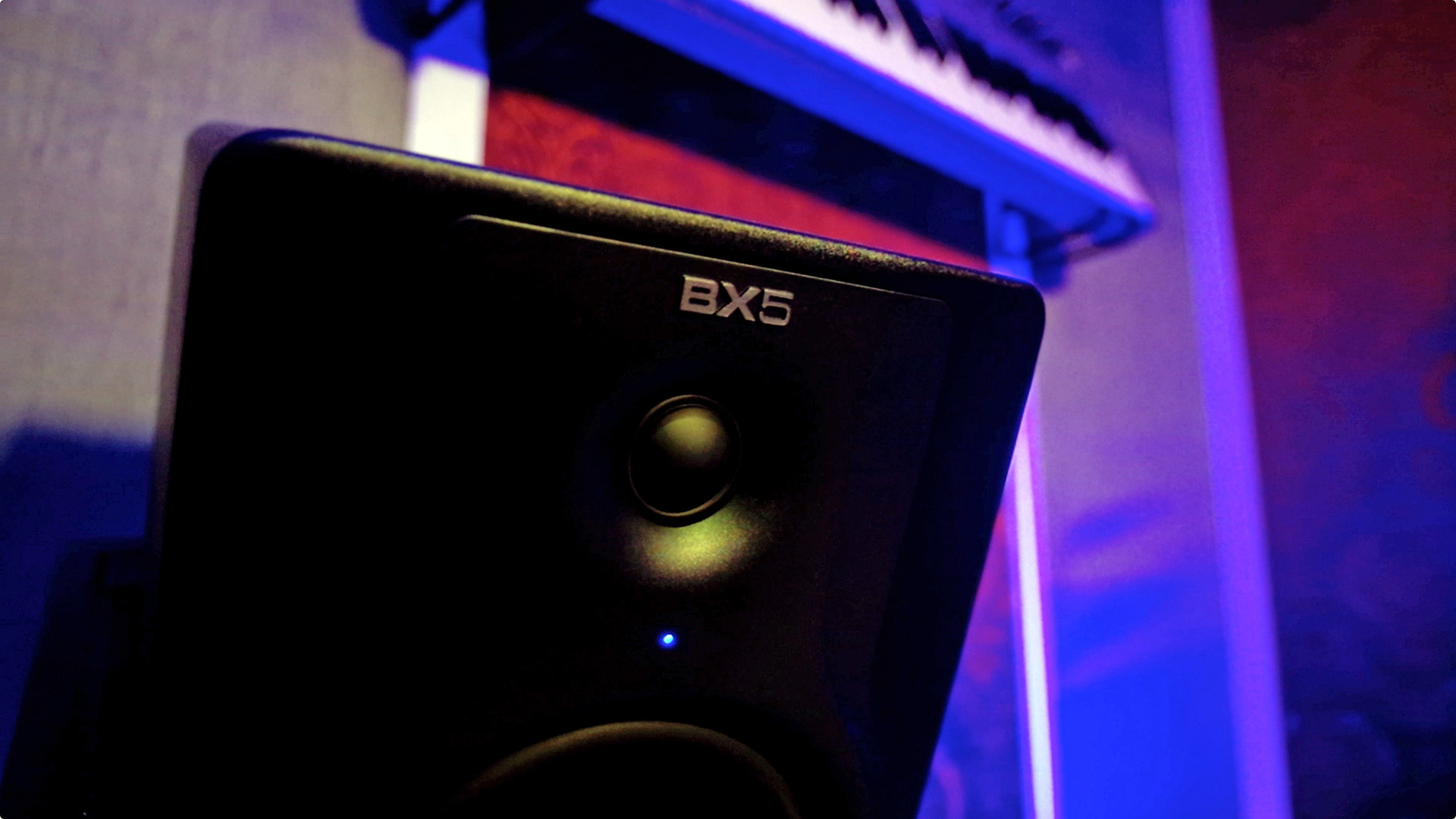
The 5 inch cones are made of Kevlar, not carbon fiber as the name would suggest. Perhaps “Carbon Black” in the name is referring to the color. Kevlar is typically yellow in color—you’ve seen many monitors out there with yellow cones. However, be careful and don’t just assume that all yellow cones are Kevlar because there are a lot cheap knock-offs. The KRK’s created a fad with the yellow Kevlar cone, and a lot of crap manufactures have tried to copy them. DuPont is the official manufacturer of Kevlar, and for something to legally be called Kevlar it must come from them. These BX5’s are legit Kevlar. Alternatively, carbon fiber is similar to Kevlar but ultimately an entirely different product. As far as acoustic resonance is concerned in reproducing sound, there’s probably not a huge difference between the two—but when it comes to stopping a bullet, you might not want to risk it.
If you’ve never listened to a Kevlar speaker—most speakers you’re accustomed to hearing are made of paper or polypropylene cones—and they do have a different sound. Kevlar is incredibly precise, that’s why you see it used in studio monitors, however they are harsh and fatiguing. And the BX5’s are no different.
What does that mean—harsh and fatiguing? Well, the notes and sounds are so crisp that they have the “sensation” of being piercing. The sounds don’t seem to blend and surround you, rather with Kevlar the sounds are individualized and attack you. Now, this is great for critical listening, the detail is fantastic, but can become fatiguing—your ears and your mind will actually become overworked when exposed to these sounds for long periods of time.
Two things help with this—one, you. Your body and mind will work itself up and condition itself, or train itself to hearing these sounds. Just like working out in the gym, the more time you spend listening to Kevlar speakers, the more endurance your ears will have and eventually it will become second nature.
The second thing that is incredibly important with all studio monitors, especially these BX5 Kevlar monitors, is allowing them the proper time to break in. That means playing a lot of music, a variety of music, at typical listening volume for about 24 hours or more. Not all at once, but you need a solid week or two of normal session time before these speaker get broken in and mellow out a bit. And they will mellow out a bit.
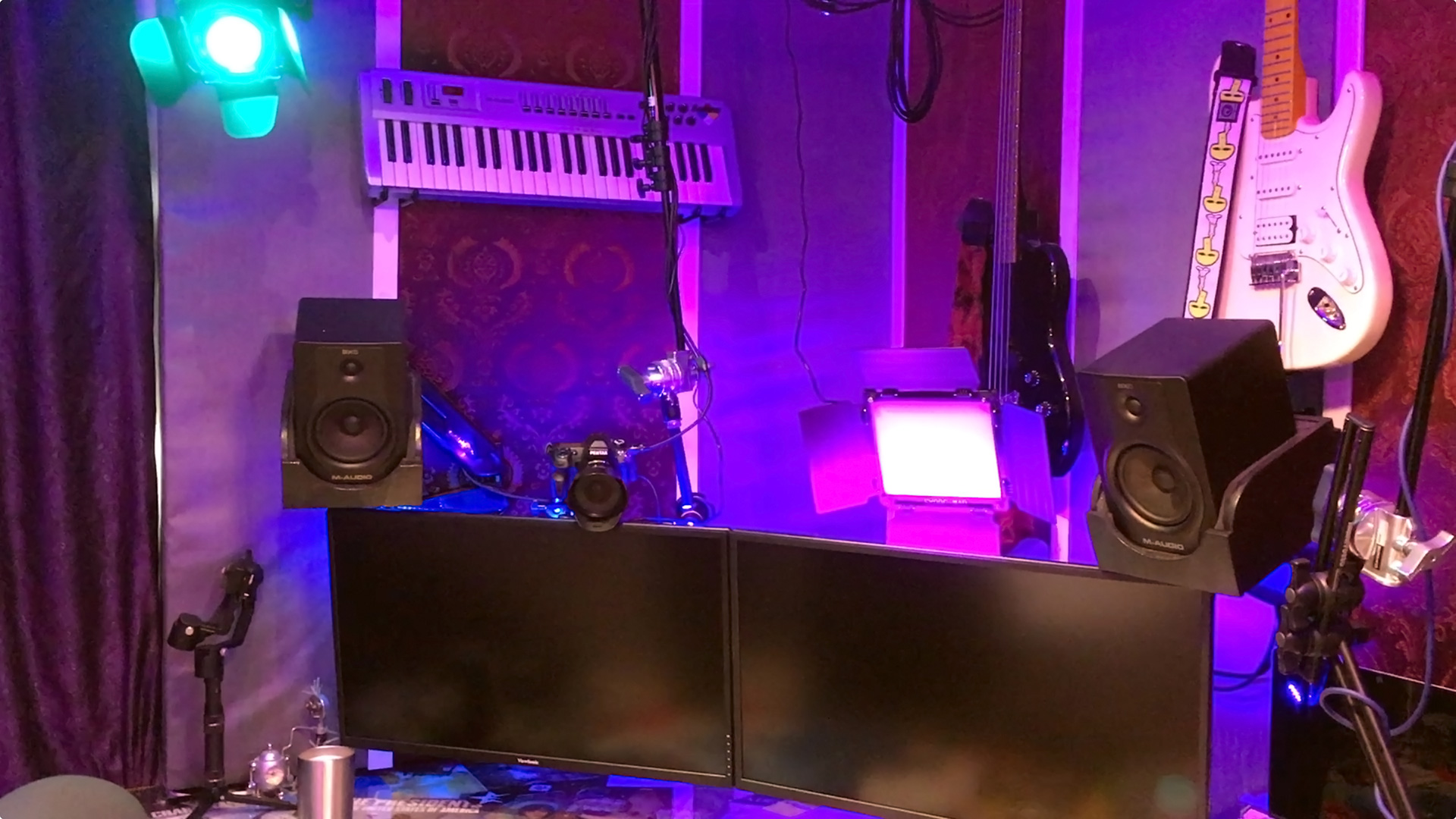
When I first plugged in the BX5’s and let them rip, they were wince-worthy harsh. I actually cringed. The clarity was fantastic, they were filled with a super amount of detail, but they weren’t pleasant to listen to. It’s hard to explain if you’ve never experienced it—the best example I can give is a pair of 30 year old KEF’s made with a paper driver—these things are so far on the opposite end of Kelvar where they’re almost too warm and the sounds blend together and muddy. Obviously, the KEF’s aren’t actually “muddy” and the Kevlar BX5’s aren’t “harsh”, but these are just analogies to help express the sensation and discuss the nuances between them.
With that said, don’t judge your BX5’s right out of the box. These monitors truly need that break in period. For me, it really was that two week mark where I started to be impressed by these speakers. I think both my ear became accustomed to them, and the speaker itself had time to break in—both aspects meeting in the middle and it was then that I decided to make these BX5’s my everyday studio monitor.
Again, remember, I didn’t even want these speakers and was highly skeptical of them—after about that two week point I decided these monitors were doing everything I wanted of them and I couldn’t justify spending hundreds of more dollars on chasing better sound. Again, diminished returns. The juice just wouldn’t be worth the squeeze—the BX5’s do a great job.
They are only a 5 inch driver so lower your expectations when it comes to low end. Yes, it’s present but you certainly won’t feel it. Obviously the BX5’s blow the pants off any normal desktop speaker system, but if you are mixing music or videos with a low end rumble, you’ll need a subwoofer. That’s typical and to be expected with a 5 inch speaker, that’s not a gripe against the BX5’s. When you get around that 8 inch driver size, you may not need the sub. Anything smaller, you probably do.
A lot of my mixes are all spoken word for audiobooks and such, I’m not concerned with the low-end so the BX5’s are fine for me. I cannibalized an old 100 watt home theater sub for the time being—I’ve got a button on my Mackie Big Knob that I push to activate it. I use it simply for entertainment and listening to music, and turn it off when I’m actually working on audio so that it doesn’t muddy things up.
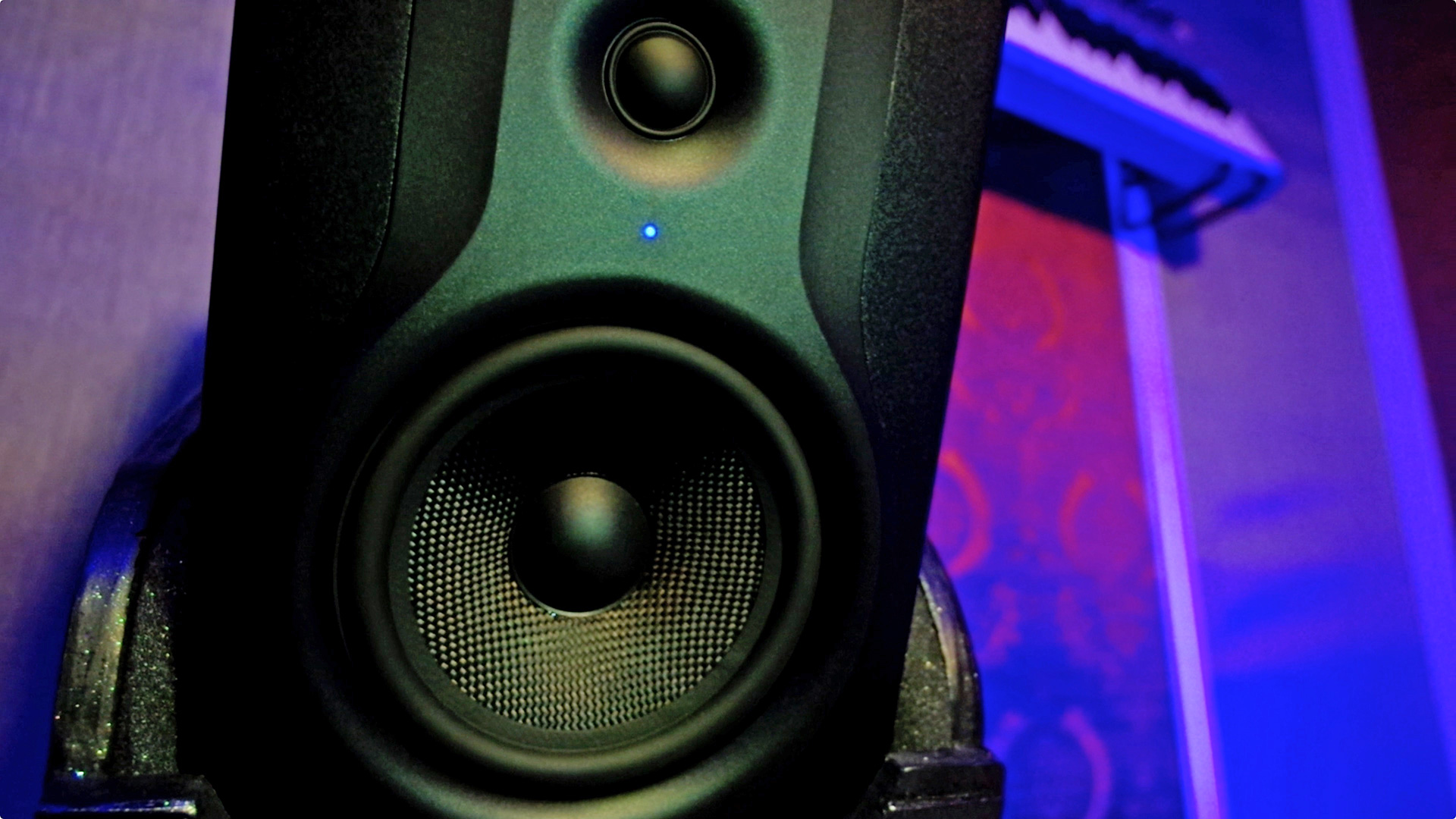
The midrange and tweeters are where the M-Audio BX5’s truly shine. Very balanced and accurate. I’m not left needing anything more. Yeah, I may like a bigger driver for more presence—but straight across the board in the 5 inch category against JBL, PreSonus, Mackie, KRK—whatever, in reality it’s all pretty subjective. Each is decently made and do a good job of what they were designed to do sonically, it’s just a matter of preference or features. Features can play a big role in distinguishing one another, if your desk and speakers are backed up against a wall, which almost everyone’s is—be careful of that rear port. Rear firing ports against a wall will over exaggerate the bass—and that’s absolutely something you don’t when creating audio. Your mix will only sound good when listening on your speakers in your room, everyone else in the world won’t be hearing what you’re hearing. In my case, making the decision between all different brands and features was easy—it was made by amazing Black Friday deal.
So let’s talk about soundstage a little bit. The BX5’s have excellent imaging and it’s very prominent. When listening to a track in the sweet spot, generally anywhere I sit at my desk, I can easily point to where imaginary instruments or vocals appear. The way I have my speakers positioned it’s almost angelic or ethereal—a subtle domination from above and I really like it.
I know a few of you will be freaking out because my monitors are elevated above my ears. Yup. I’m not mixing Grammy award winning albums, and I’ll wager that any of you criticizing this position aren’t either. My computer screens take up a lot of real estate. There are two 32 inch as mains, and I’ve got the 15 inch laptop off to the side, and another 24 inch that runs other computers or devices. Placing the speakers way out on the edges of all of this equipment messes with with the equal triangular distance and the soundstage. I understand the technical arguments for positioning your monitors at ear level. However, like with most things in life, it comes down to practice and being accustomed with your gear—once how I understand how the sound works with the monitors being positioned in the way that they are, I can adjust to it. And like I said, at this point I actually prefer it.
For those interested in making these speaker cradles that are attached to fully adjustable gas spring computer monitor arms that are mounted to the wall, check out my other video here, or here—I don’t know, there will be a link somewhere.
So, overall, what’s the deal with the BX5’s. Bottom line, I’m totally happy with them and have been pleasantly surprised and impressed by them. So much so that I decided to keep them as part of my daily studio setup. I even went to the trouble of building these special arial cradles designed especially for them so that I could incorporate them into this setup.
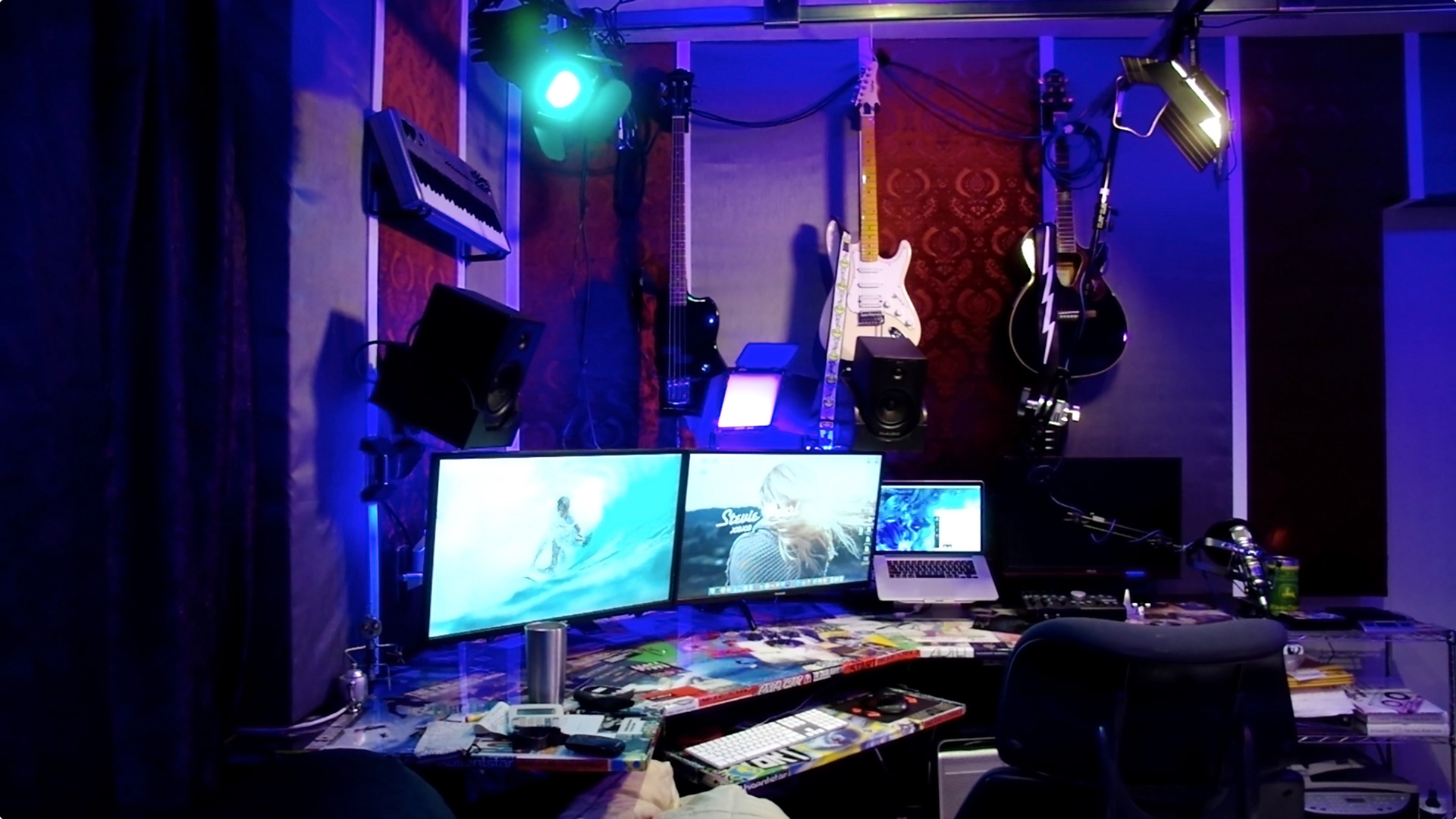
The BX5’s are so good that I couldn’t justify spending hundreds or a thousand dollars more on a different studio monitor setup for general multi-media creation—I’d even feel comfortable doing casual home studio album mixes on them.
These speakers don’t kick me in the pants, but they are plenty loud and the most impressive thing is their detail. Being bi-amped, clarity is accurate and driver and tweeter aren’t competing with each other. Something that we tend forget about getting bogged down in the specs and reviews is that it’s fun listening to good speakers. When you get your hands on a pair of studio monitors with this level of clarity, it gives a whole new dimension to music and the different things you listen to—I love picking up mistakes or subtle background noise in my favorite songs. The turn of a page while a musician is reading music, inflection within breathes of air, or birds tweeting outside of window during a podcast. The BX5’s are accurate enough to find this stuff—which makes me better when creating my content. You’ll be able to find mistakes you never knew that existed.
I do recommend adding a subwoofer. I’d crossover between 80 to 100 Hz, maybe even 120 Hz depending on your sub—but let the BX5’s run wild in the mid-rage. Being a 5 inch driver, the BX5’s footprint is relatively small and should work for most desk setups—they measure 10 inches tall, 7 inches wide, and 7 1/2 inches deep. Keep in mind, If you want that extra presence with a larger driver, you’ll need a lot more desk space.
As I’ve said, I make audiobooks, podcasts, YouTube videos, documentaries, commercials, and compose music for short intros / outros / stingers but I do it all in a properly treated studio. All of these walls are sound absorption panels, and I have large skyline sound diffusers above my head and across the wall behind me. To me, because I do record, a good sounding room is way more important than a good sounding gear—I can compensate for a crappy speakers or microphones to an extent, but there’s nothing I can do for a poorly treated room.
With the BX5’s, I don’t really feel that I’m compensating for anything or that they are holding me in any way. At their normal $300 price for pair, they do get my endorsement. I’m not going to say that the M-Audio’s are better than their competitors, but I will say that if the BX5’s are your radar and you’re interested in them, I have zero hesitation in recommending them. Remember to give them an adequate break-in period because they can seem abrasive at first, but overall the BX5’s are a quality product, well made, and have preformed flawlessly for me.

Now, before you go—the most important thing that you need to do with your new monitors is calibrate them—any monitors, not just the BX5’s. They will not work together straight out of the box and the little dashes or numbers on the volume knob are totally useless—do not use them!
If you need help setting up and calibrating your new monitors, equalizing the volume so that they each play at the same level—check out my video on how to do that. Do not skip this step! You’re wasting your money and your soundstage will be all messed up if you don’t it.
So to recap, acoustically treat your listening environment. Make sure to be honest with yourself about what you actually need. And, set your new monitors up properly by calibrating them.
Finally, I’m going to leave you with a sound sample of the M-Audio BX5’s. Granted, this test is a little foolish as it’s completely dependent on the speakers you’re using, the compression added by YouTube, and the quality of the test microphone I’m using. It’s a measurement microphone used for room testing, it’s very flat—the Dayton Audio EMM-6. It might not be the most dynamic, but should be fairly accurate.
If you found this review helpful, please like and subscribe. It really helps out the channel. Comments are great—let me know your thoughts! Here’s what these M-Audio BX5’s sound like in action—thanks for watching.










